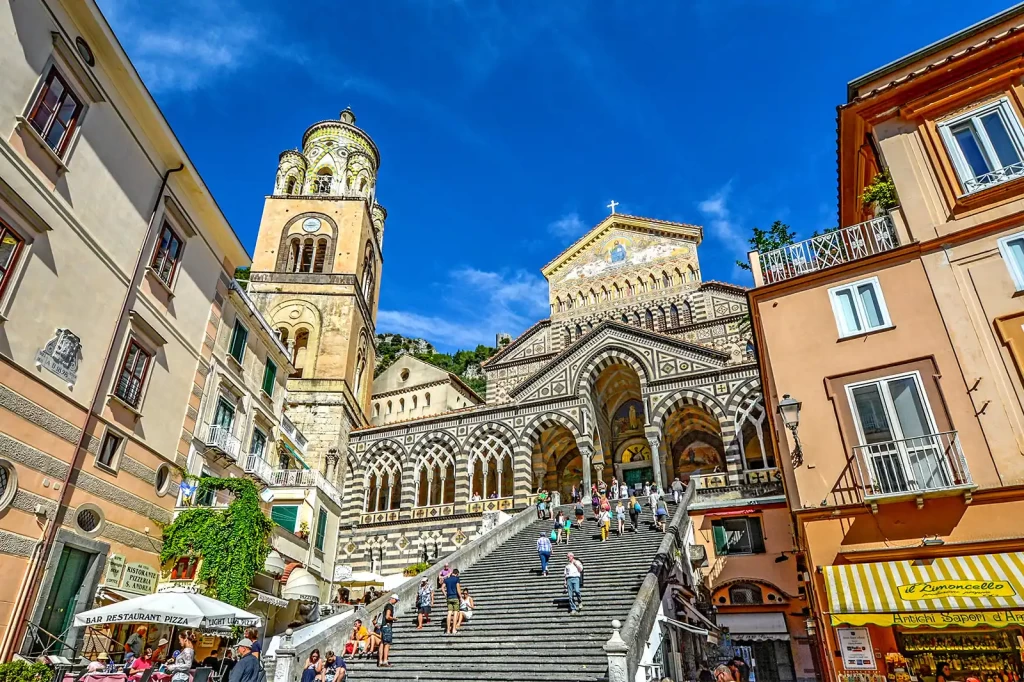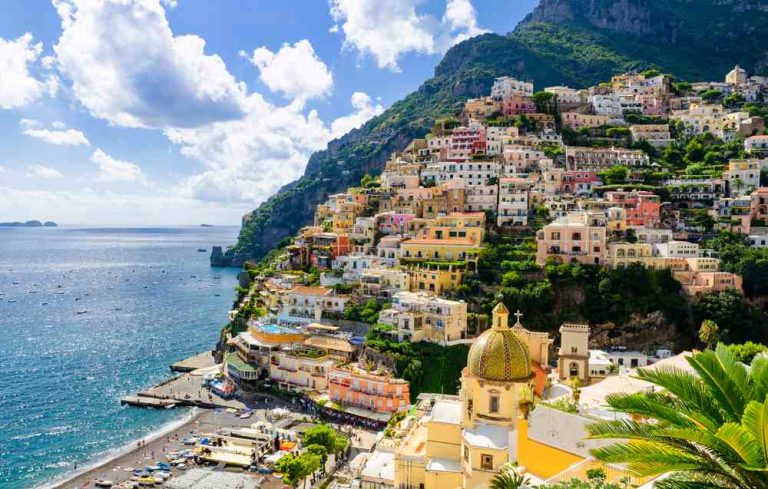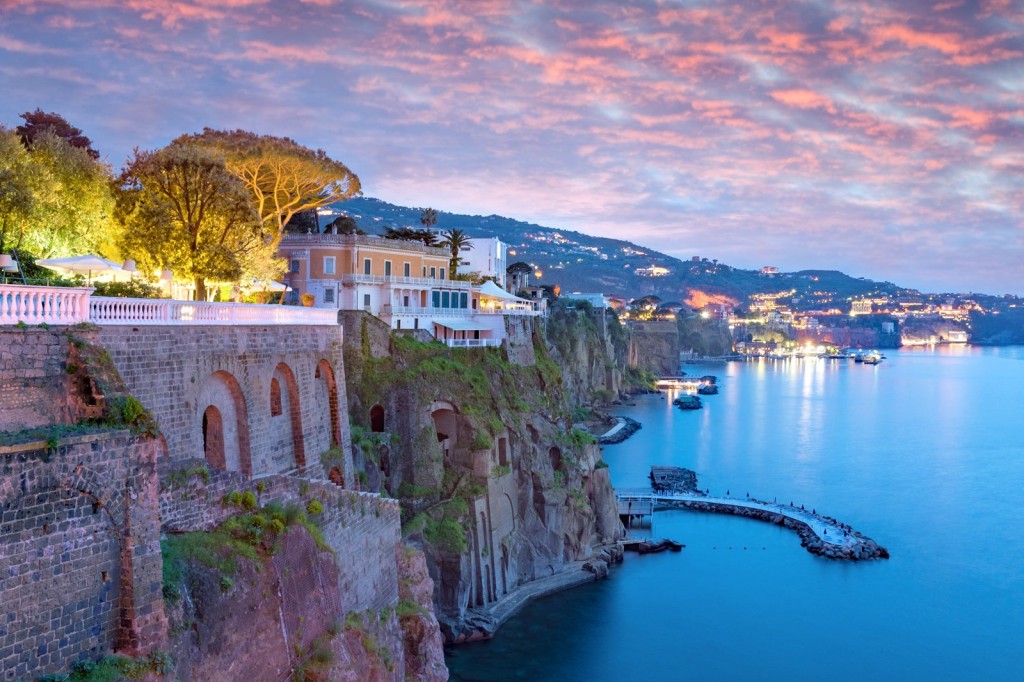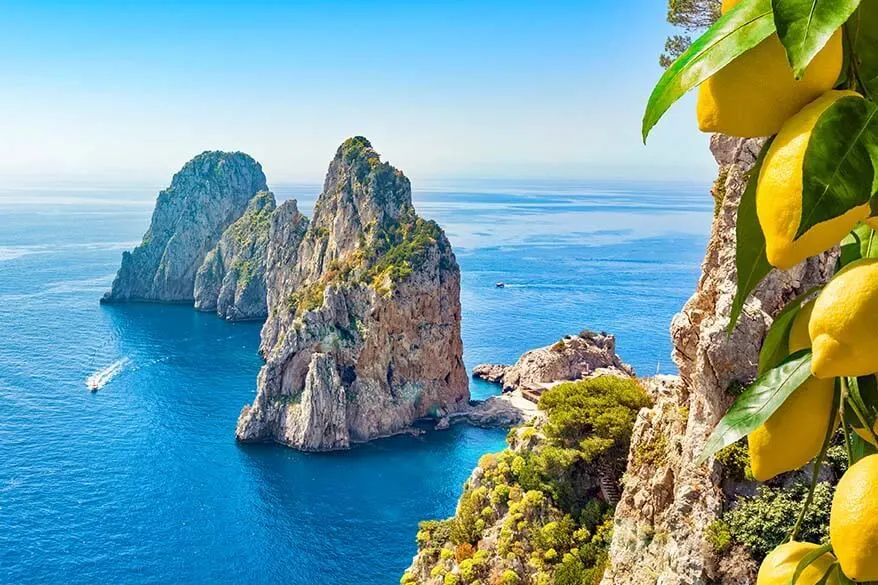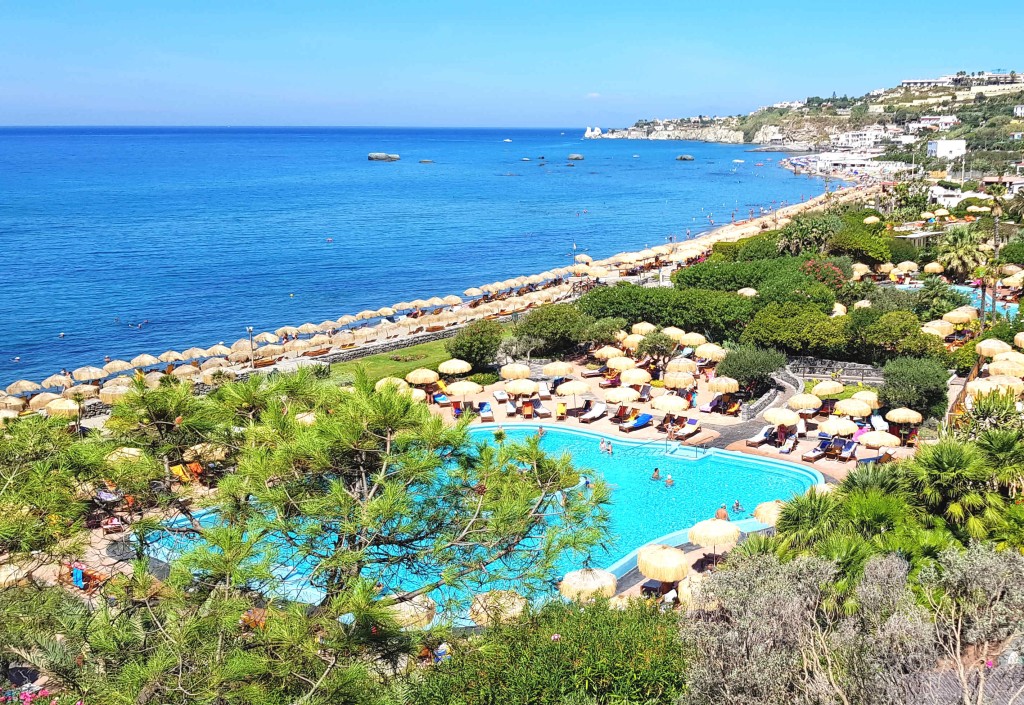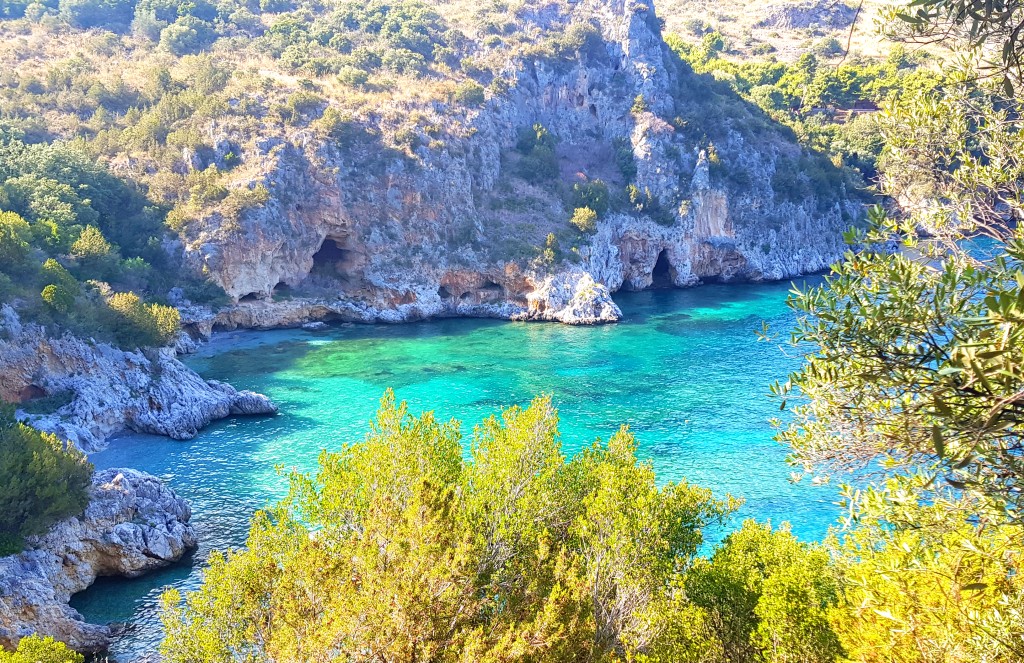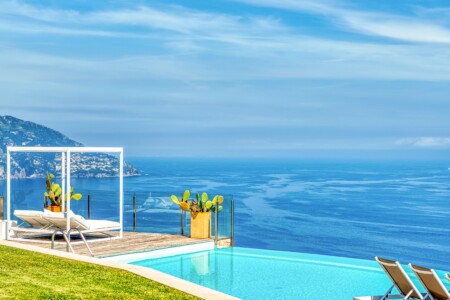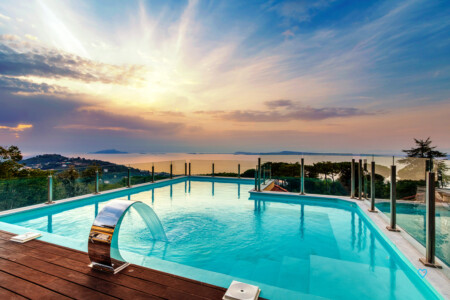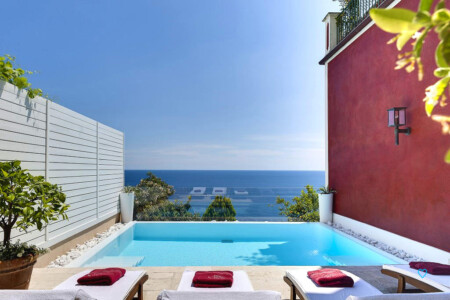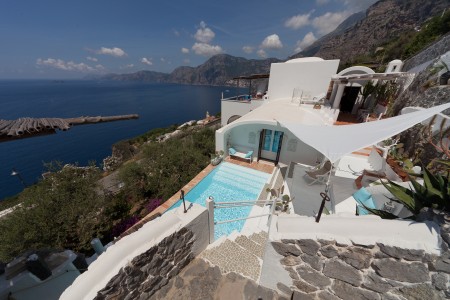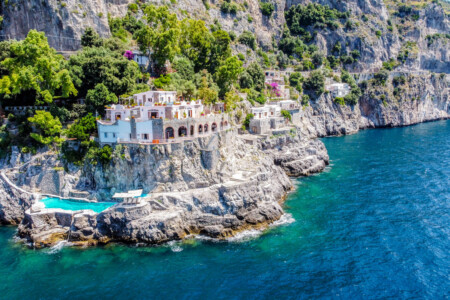A balcony between cobalt blue sea and the Lattari mountains, with coves, beaches and terraces with vineyards, citrus and olive groves.
Deemed an outstanding example of a Mediterranean landscape by Unesco, the Amalfi Coast is one of Italy’s most memorable destinations. The Amalfi Coast seems to be one grand balcony suspended between a sea of cobalt blue and the feet of the Lattari Mountains, in a long stretch of hollows and promontories, coves, cultivated terraces, vineyards, and citrus and olive groves. Set in a unique environment, it is an exemplar of a Mediterranean landscape and of enormous cultural and natural value due to its topographical characteristics, as well as its historical evolution. For this, it is protected by UNESCO.
The entire area extends over 11,231 hectares between the Gulf of Naples and the Gulf of Salerno, comprising 16 splendid villages within the Province of Salerno: Amalfi, Atrani, Cava de’ Tirreni, Cetara, Conca dei Marini, Furore, Maiori, Minori, Positano, Praiano, Raito, Ravello, Sant’Egidio del Monte Albino, Scala, Tramonti, and Vietri sul Mare. These are destinations famous all over the world for their beauty and their inhabitants’ warm hospitality. The other well-known tourist destinations like Sorrento, Ischia, Capri, Cilento National Park, Naples and the archaeological excavations of Pompeii and Herculaneum are easy to reach.
The cities and countryside towns of the Amalfi Coast are different one from the other, each with its own traditions and peculiarities that make them unique. Its string of fabled towns read like a Hollywood cast list. There’s jet-set favourite Positano, a pastel-coloured cascade of chic boutiques, spritz-sipping pin-ups and sun-kissed sunbathers. Further east, ancient Amalfi lures with its Arabic-Norman cathedral, while mountaintop Ravello stirs hearts with its cultured villas and Wagnerian connection. To the west lies Amalfi Coast gateway Sorrento, a handsome clifftop resort that has miraculously survived the onslaught of package tourism.
The Amalfi Coast remains an intriguing mix of sophistication and simplicity. A mere seagull’s spit from the super yachts, chauffeur-driven Mercedes-Benz and five-star hotels, another more rural reality exists. Around precariously stacked hill villages, farmers still cultivate small plots of steeply terraced land, and their wives make cheese; down on the coast, tiny fishing communities make a living from the sea. The link between these worlds is Strada Statale 163 – the ‘road of 1,000 bends’ – commissioned by King Ferdinand II of Naples and completed in 1852. It hugs cliffs and deep gorges for 40km, slicing through lemon groves and whitewashed villages, rising and dipping above the shimmering sea.
POSITANO AND SURROUNDINGS
The sight of Positano from a distance is breathtaking: colour is everywhere, the houses built up from the waterside, accessible to one another via an endless array of steep stairs, boast pale sorbet colours. Among the most beautiful centres in Amalfi Coast, Positano is a place where to live the holiday you have always dreamt of: sun, sea, unpolluted nature, delicious cooking and relaxation. Many are the beaches of Positano: the central one is the Spiaggia Grande, followed by Fornillo, both of them reachable on foot. The other beaches of Positano such as La Porta, San Pietro, Laurito and Arienzo can be reached mainly by sea. Staying in Positano also makes moving towards the most famous tourist resorts in Campania easy. In fact, it is posiible to reach easily the centres of Amalfi Coast, like Amalfi and Ravello, famous all over the world for their beauty and their inhabitants’ warm hospitality, and other well-known tourist destinations like Sorrento and Sorrento Coast, Naples and the archaeological excavations of Pompeii and Herculaneum.
CAPRI ISLAND
Capri is perhaps the most glamorous of all Italian islands, a magnet for the rich and famous who are attracted by its dazzling waters, its famous Blue Grotto and designer-brand shopping streets. When considering glamorous destinations in Italy, it’s not very long before the island of Capri becomes part of the conversation. In a country full of locations coupling breathtaking scenery with elegance, Capri has just that extra little bit of swagger compared to its rivals in that regard. The higher echelons of society seldom reach greater heights than that of an emperor and Capri was once the home of the controversial Tiberius. Capri is home to both rural farming and fishing communities, most obviously reflected in the island’s well-known culinary traditions, based on simple, fresh ingredients from land and sea and overflowing with the big, bold, sunny flavours of southern Italy. If you want to catch the magic of Capri, you should stay more than few days and walk across the island. You’ll quickly leave the bustle behind you and understand why so many people don’t want to leave.
CILENTO COAST
The National Park of Cilento, Vallo di Diano and Alburni comprises most of the southern area of the Campania region. Located just a little further south of the Amalfi Coast, it is the second largest National Park in Italy and one of the most important ecosystems of the Italian peninsula. Chosen every year as a summer tourist destination by thousands of Italians and rich in unspoiled naturalistic beauties, millenary histories and archaeological sites, the Cilento Coast boasts of numerous awards relating to the quality of the waters with the highest honor conferred by FEE and Legambiente. Entirely viable through a road system that crosses every small seaside tourist destination of the Cilento National Park, the Cilento Coast can certainly be one of the ideas to consider for your next summer. Breathtaking views from the hills covered with centuries-old cork oaks, trekking the mountains and cruising along the Cilento coast, mouth-watering regional cuisine and the special friendliness of the locals captivate visitors all year round.

